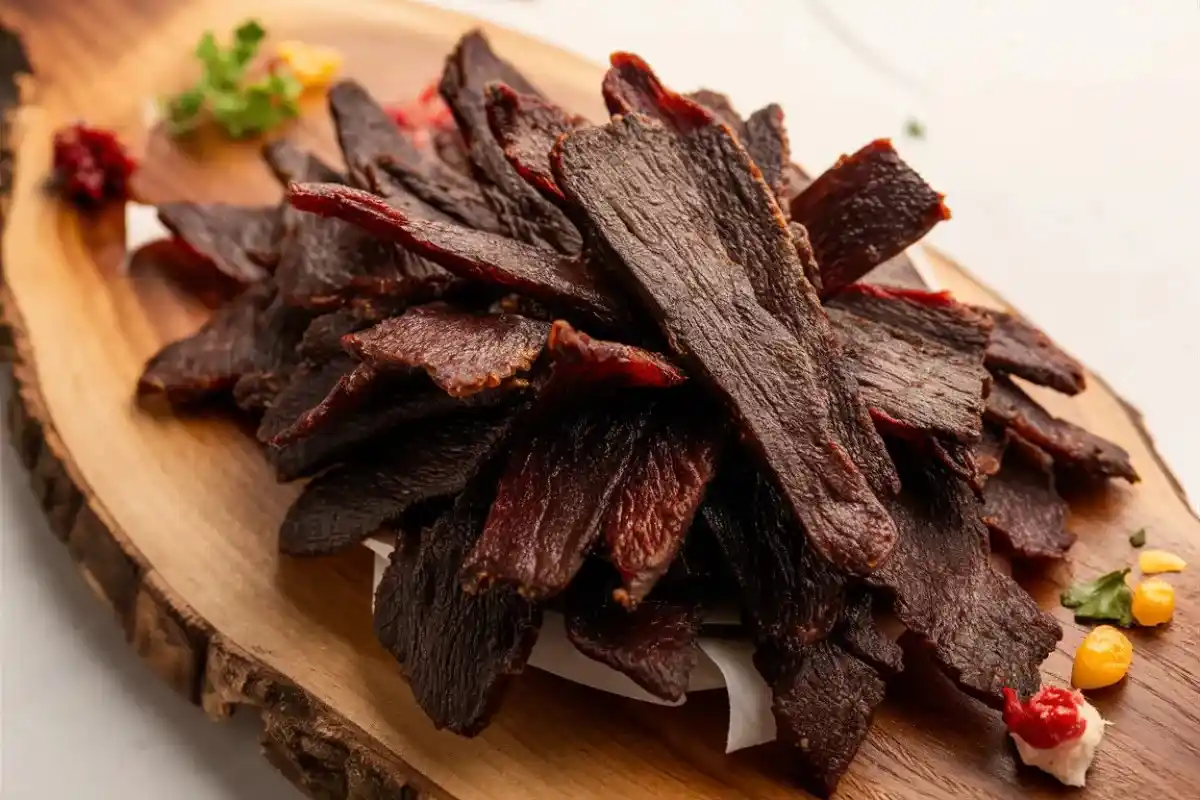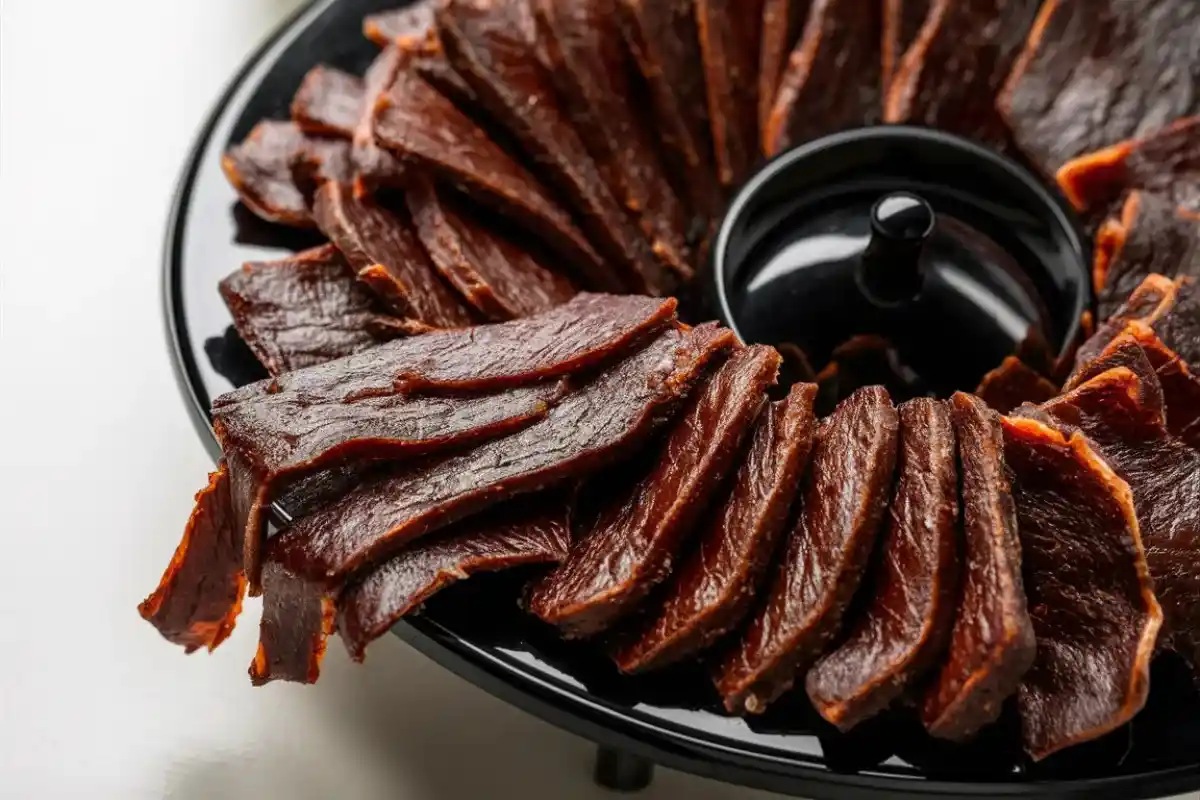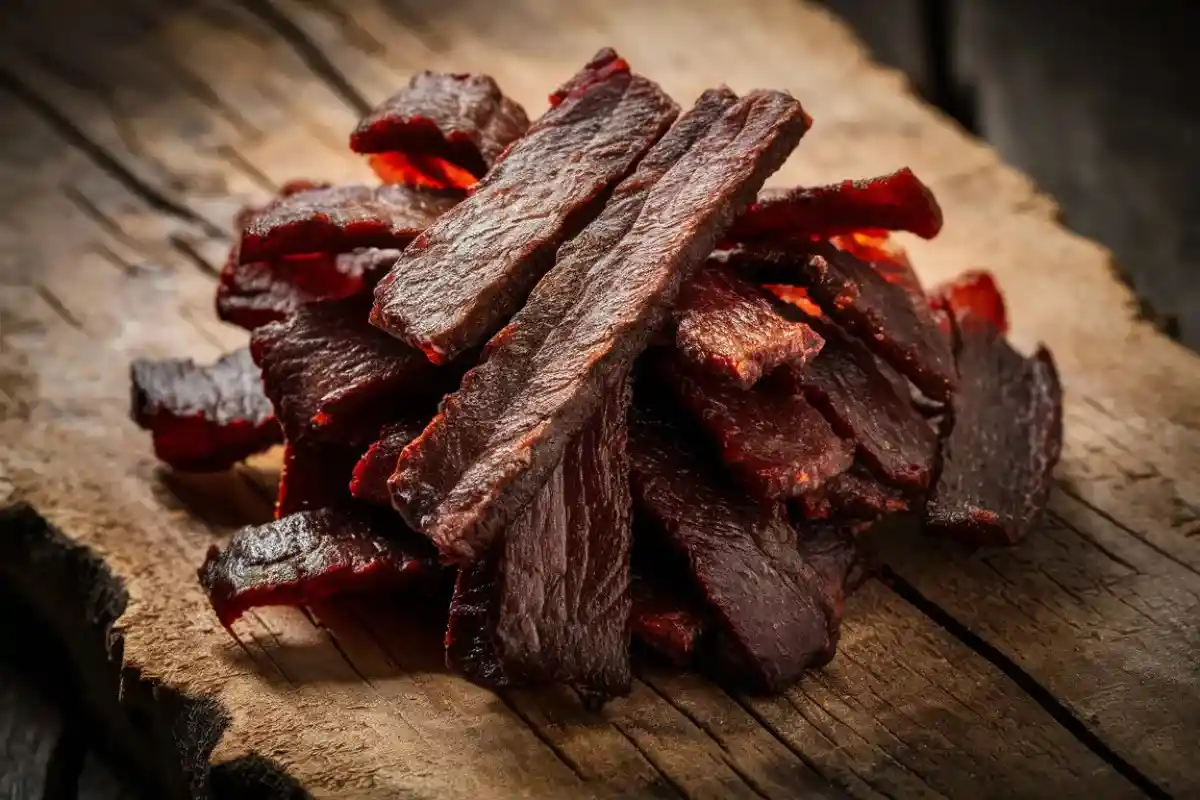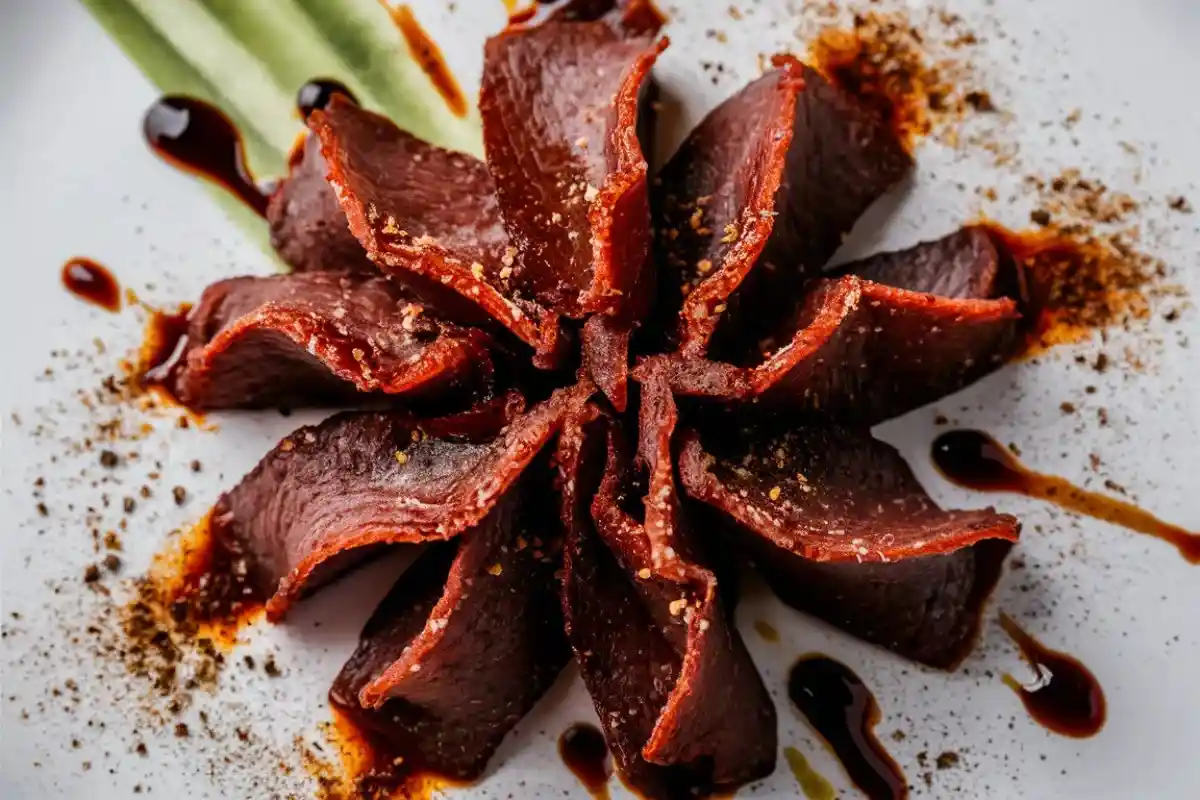Beef jerky is a cherished snack, known for its savory taste and chewy texture. However, like any preserved food, it can spoil if not handled or stored correctly. Understanding what to do if you eat bad beef jerky is vital to address immediate concerns and prevent future occurrences. This article will guide you through the steps to take if you’ve consumed spoiled beef jerky, how to store it properly, and tips to always have fresh and tasty jerky on hand.
Why Does Beef Jerky Go Bad?
Understanding What to Do If You Eat Bad Beef Jerky
Knowing what to do if you eat bad beef jerky starts with understanding the reasons behind its spoilage. Beef jerky is designed to have a long shelf life, but several factors contribute to its deterioration:
- Age of the Jerky: Even when unopened, beef jerky has a shelf life, and the best way to avoid wondering what to do if you eat bad beef jerky is to consume it within its recommended period. For more on understanding shelf life, see the science of beef jerky shelf life.
- Improper Storage Conditions: Exposure to moisture, light, and air can lead to rapid spoilage. Understanding these factors is key to preventing situations where you need to know what to do if you eat bad beef jerky.
- Quality of Ingredients: High-quality jerky made from lean cuts and processed with care tends to last longer. Inferior cuts or poorly made jerky will degrade faster, even under ideal conditions.
- Packaging and Preservation Methods: Jerky packaged with vacuum-sealing or nitrogen flushing helps to maintain freshness by limiting oxygen exposure, which reduces the risk of spoilage.
Signs of Spoiled Jerky: How to Know If Your Beef Jerky is Bad

Identifying when your jerky has gone bad is crucial for avoiding the unpleasant consequences of eating it. Knowing what to do if you eat bad beef jerky involves being vigilant for the following signs:
- Smell: A rancid or sour smell is a major indicator that your jerky is no longer safe. If you’re unsure what to do if you eat bad beef jerky, start by checking for this and other spoilage signs.
- Appearance: Spoiled jerky may show visible signs of mold, discoloration, or have a slimy texture on its surface. A fresh piece of jerky should be dry, with a uniform color.
- Texture: While jerky is generally chewy, spoiled jerky might feel overly hard, brittle, or strangely soft in places where it shouldn’t be.
- Taste: If you take a bite and notice an off or sour taste, it’s best to spit it out and discard the rest.
For more detailed insights on the characteristics of spoiled beef jerky, you can explore our guide on how to tell if beef jerky is bad.
Immediate Steps: What to Do If You Eat Spoiled Beef Jerky
If you suspect the jerky you’ve eaten may have gone bad, follow these steps to manage the situation and prevent future problems:
- Stop Consuming the Product: Discontinue eating the jerky immediately. It’s always better to be cautious and avoid any further exposure to potentially spoiled food.
- Check the Packaging: Look for signs on the package, such as tears, holes, or improper seals. Verify the expiration date to see if the jerky is past its recommended period. Jerky stored beyond its shelf life is more prone to spoilage.
- Inspect for Visible Signs of Spoilage: Examine any remaining jerky for changes in color, texture, or the presence of mold. A quick visual check can help you determine if the product has indeed gone bad.
- Document the Purchase: If you bought the jerky from a store or online, keep a record of the purchase, including receipts and packaging. This documentation can be helpful if you decide to contact the manufacturer or retailer about the spoiled product.
- Consider Reaching Out to the Manufacturer: Many jerky brands have customer service lines or websites where you can report quality issues. Providing feedback can help the manufacturer address potential problems and offer compensation or a replacement.
- Dispose of the Spoiled Jerky Safely: Seal the jerky in a bag and dispose of it properly to prevent pets or other animals from consuming it.
How to Prevent Spoiled Jerky: Tips for Keeping Beef Jerky Fresh

To ensure your jerky remains fresh and delicious, follow these preventive measures:
Choose High-Quality Jerky
Start with selecting high-quality jerky made from lean cuts of meat, free from additives or excessive preservatives. Look for reputable brands known for their quality control and freshness. Jerky that is handcrafted or made in small batches is often more reliable than mass-produced varieties.
Check the Packaging
When purchasing beef jerky, pay attention to the packaging. Opt for products that are vacuum-sealed or packed with oxygen absorbers, which help maintain freshness by limiting oxygen exposure. Packaging should be free from any visible damage or openings.
Store Jerky Properly
- Cool and Dry Environment: Store beef jerky in a cool, dry place away from direct sunlight. Exposure to light and heat can accelerate spoilage. Ideally, keep it in a pantry or cupboard that remains at a stable temperature.
- Airtight Containers: Once opened, transfer jerky to an airtight container or resealable plastic bag. This minimizes air exposure and helps maintain moisture levels, extending its shelf life.
- Freezing as an Option: If you have a large amount of jerky or don’t plan to consume it quickly, consider freezing it. Freezing is an excellent way to extend the shelf life of beef jerky without compromising its flavor or texture. Before freezing, ensure the jerky is tightly wrapped or stored in a freezer-safe container.
You can find additional storage tips on how to store beef jerky long-term.
Be Mindful of Shelf Life
Beef jerky has a limited shelf life, even under ideal conditions. Check the expiration date before purchasing, and consume the product promptly. Keeping a note of the date you opened the package can also help track its freshness.
Use Moisture Absorbers
When storing jerky, consider using silica gel packets or other moisture absorbers to reduce humidity. These small packets can be placed inside the container or bag to maintain a dry environment, which helps prevent mold growth.
Creative Ways to Use Beef Jerky
If you have leftover jerky, there are numerous ways to use it creatively in your cooking. Incorporating jerky into different dishes can add a burst of flavor and provide a unique texture to your meals.
Add to Soups and Stews
Beef jerky can be chopped or crumbled and added to soups and stews for a smoky flavor. It works well in hearty dishes like chili, potato soup, or beef stew, where its saltiness can complement other ingredients. For more soup recipes, consider looking at ideas like rotisserie chicken recipes to pair with jerky.
Use as a Topping
Sprinkle crumbled beef jerky over salads, baked potatoes, or even scrambled eggs to add a savory crunch. It also makes an excellent garnish for dishes like nachos or loaded fries, enhancing both flavor and texture.
Incorporate into Trail Mix
Beef jerky is a great addition to homemade trail mix. Combine small pieces of jerky with nuts, dried fruits, seeds, and pretzels for a balanced, protein-packed snack. This mix is perfect for hiking, camping, or road trips.
Blend into Dips
Pulverize beef jerky into fine crumbs and mix it into dips like hummus, cheese dips, or guacamole. It adds a smoky undertone and a unique flavor twist to traditional dips.
Bake into Bread or Crackers
For a unique twist, add finely chopped beef jerky to bread or cracker dough before baking. The jerky will infuse the baked goods with a subtle, savory taste, making for an interesting snack option.
Make Jerky Crusts
Grind beef jerky into a powder and use it as a seasoning for crusts. This can be done for meatloaf, pork chops, or even fish fillets to give them an extra kick of flavor. Combine the powdered jerky with breadcrumbs or crushed nuts for added texture.
Create Savory Muffins
Incorporate beef jerky bits into savory muffin batter along with cheese, herbs, and spices. The jerky adds a salty depth to the muffins, which can be served as a snack or a breakfast option.
Tips for Jerky Lovers
Whether you’re a seasoned jerky fan or new to this popular snack, here are some additional tips to enhance your jerky experience:
Explore Different Flavors
Don’t limit yourself to just one flavor of beef jerky. Many brands offer a range of flavors, from classic smoked and peppered to more adventurous options like teriyaki, barbecue, or even sweet chili. Experimenting with different flavors can keep your snacking interesting and diverse.
Pair with Complementary Foods
Jerky can be paired with various foods for a complete meal or snack. Pair it with cheese, fresh fruits, or nuts for a well-rounded snack. Jerky also goes well with wine or beer, making it a great choice for casual gatherings or parties.
Make Your Own Jerky
If you love beef jerky, consider making your own at home. This allows you to control the ingredients, flavors, and preservatives. You can use a dehydrator or a low-temperature oven to make jerky from your choice of meat. Try experimenting with different marinades and spices to create a unique blend that suits your taste.
Learn About Jerky Shelf Life
Understanding the shelf life of beef jerky is key to ensuring you always have a fresh product on hand. Learn about the different types of preservation methods, from traditional drying to modern packaging techniques, which can impact how long your jerky stays fresh. For more information, visit how long does beef jerky last.
The Future of Beef Jerky: Trends to Watch

As the popularity of beef jerky continues to grow, new trends are emerging in the jerky market. Here are some trends to watch for:
Gourmet Jerky
With the rise of foodie culture, there is an increasing demand for gourmet jerky made with high-quality ingredients and innovative flavors. Artisanal jerky makers are experimenting with exotic spices, unique flavor combinations, and even using meats other than beef, such as turkey, bison, or venison.
Health-Focused Jerky
Consumers are becoming more health-conscious, and this trend extends to jerky. Many brands are now offering low-sodium, low-sugar, and gluten-free options. Some are even focusing on organic or grass-fed meats, catering to those who are mindful of their diet and nutritional intake.
Plant-Based Jerky
As plant-based diets gain popularity, companies are creating vegan and vegetarian jerky alternatives using ingredients like mushrooms, jackfruit, or soy. These alternatives provide similar textures and flavors to traditional beef jerky, offering options for those who do not consume meat.
Sustainable Packaging
Environmental consciousness is driving a shift towards sustainable packaging solutions. Many jerky brands are adopting eco-friendly packaging materials and reducing waste, aligning with consumer demand for more sustainable practices.
Subscription Services
For convenience-loving consumers, jerky subscription services have emerged. These services deliver a variety of jerky flavors and types directly to customers’ doors each month, allowing them to sample different products without leaving home.
Frequently Asked Questions
1. Can you get sick from eating bad beef jerky?
Yes, eating spoiled beef jerky can cause discomfort or illness. Signs of spoilage include a rancid smell, mold, discoloration, or a sour taste. It’s important to check your jerky for these signs before consuming it.
2. How can I tell if beef jerky has gone bad?
To identify bad beef jerky, check for off-putting smells, visible mold, discoloration, slimy texture, or an unusual taste. Any of these signs indicate that the jerky may no longer be safe to eat.
3. What should I do if I accidentally eat bad beef jerky?
If you realize you’ve eaten spoiled beef jerky, stop consuming it immediately. Inspect the remaining jerky for signs of spoilage, check the packaging, and dispose of any that appears suspect. Consider reaching out to the manufacturer if needed.
4. How can I prevent my beef jerky from going bad?
Store beef jerky in a cool, dry place away from sunlight, ideally in an airtight container. If you have a large amount, consider freezing it to extend its shelf life.
5. Can beef jerky be frozen to extend its shelf life?
Yes, freezing beef jerky is a great way to prolong its freshness. Ensure it is stored in a freezer-safe, airtight container to prevent freezer burn and maintain its texture and flavor.
Conclusion: Understanding What to Do If You Eat Bad Beef Jerky
Knowing what to do if you eat bad beef jerky involves understanding how to identify signs of spoilage, store jerky correctly, and creatively use it in your kitchen. By choosing high-quality jerky, storing it properly, and being mindful of its shelf life, you can enjoy this delicious snack with confidence. Stay informed about new jerky trends, explore different flavors, and even try your hand at making your own to enhance your jerky experience.
Enjoy your jerky wisely, and keep these tips in mind to ensure a tasty and enjoyable snacking adventure!

